12 lessons we learnt in Colombia
Before travelling to Colombia we’d heard so many stories about robberies and kidnappings, but we couldn’t look past the incredible destinations and trusted that by using our street smarts we’d get by just fine.
You know what beats reading about a place? Going there and finding out how dangerous it is (or isn’t) for yourself.
Here’s what we learnt while travelling in Colombia.
1. Colombian food is tasty
Colombia’s climate makes it the perfect place for fruit and vegetables to grow year-round. You know what that means? Delicious food. Arepas, empanadas, pandebono, pan de yuca, bandeja paisa – I’m not speaking gibberish, these dishes are just some of the many ways you’ll overload on carbs while exploring Colombia.
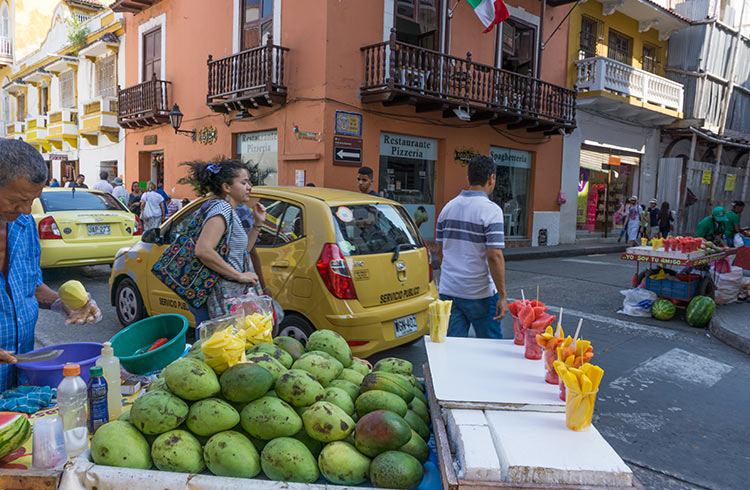
Coconuts for sale in Cartagena.
Each region has it’s own speciality or a different way to cook a traditional dish. But be sure to try a tasty empanada everywhere you go.
Tip: in most of South America, fish and chicken are considered ‘vegetarian’. Don’t ask why, just remember to say “Yo soy vegetariano, no pollo, no pescado, por favor” to ensure you don’t get served up any meat.
2. Colombian people are super friendly
After reading hundreds of blogs about getting robbed, stabbed or kidnapped in Bogota, Medellin and Cartagena, I was no doubt panic-stricken when we arrived in Bogota on the first leg of our 2.5 month trip around South America.
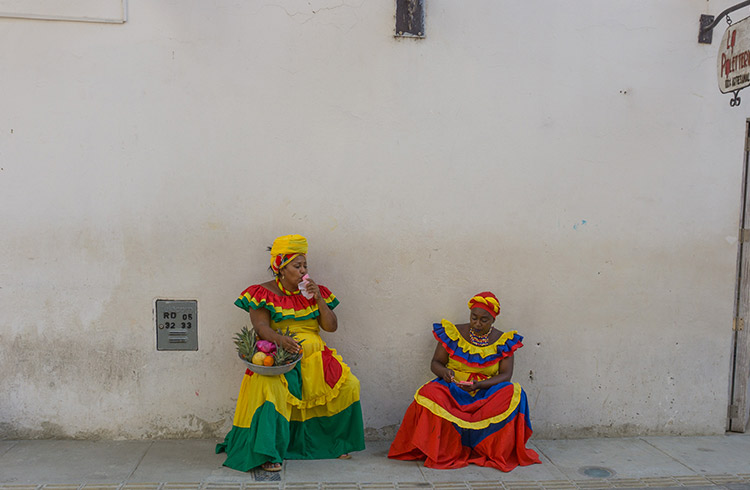
Cartagena.
Safe to say, the people in Colombia are extraordinarily friendly – even to those who struggle to speak the mother tongue, Spanish. They’ll go out of their way to help you if you’re lost, and we got the feeling they were genuinely excited to show travellers a different side to their country.
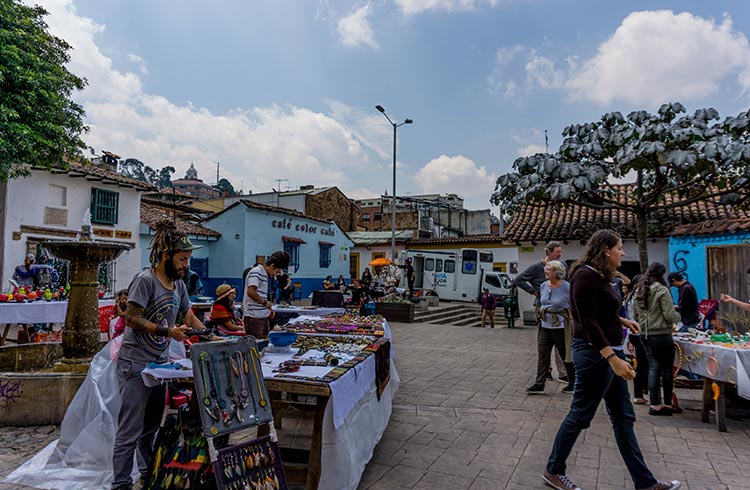
Street markets in La Candalaria, Bogota.
On the other hand, if you go asking locals for drugs, you can expect a totally different type of interaction. And it’s easy to see why. If you don’t want trouble, don’t flash your cash, camera or phone around in public. Be discreet when getting money out of the ATMs, and at least try to speak a bit of the local lingo.
Full disclosure: we didn’t have any problems in Colombia, so of course our experience was totally positive. That being said, if we were robbed or kidnapped we would’ve had a different story to tell. If you do find yourself in trouble over there, you’ll likely have a tainted experience. But you can’t taint the whole population with that brush.
3. Colombia’s street art has a story to tell
Taking a walking tour around any city in South America will offer insights into the political situation and violent past, most of the time through the colourful murals painted on the walls. When we checked out La Candalaria in Bogota and Comuna 13 in Medellin, we were nothing short of impressed by the artists’ work, showcasing stories through intricate pictures that appear to be beautiful, but have a very dark story to tell.
4. Colombia’s Caribbean Coast is hot
No shit, right? According to the position on the equator, this is a very obvious statement to make. But after spending time in Bogota (above 2,000m altitude), when you fly into Cartagena it can be quite a shock to the system.
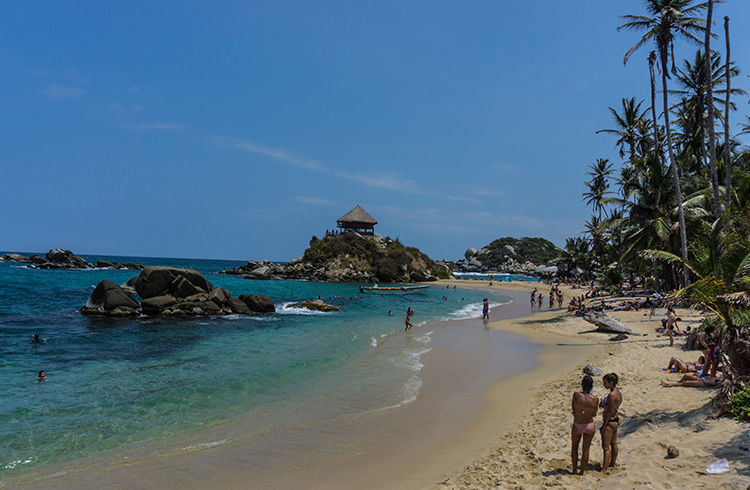
Tayrona National Park.
Just don’t expect your fresh aeroplane clothing to stay dry in the humid heat for long (literally, we were dripping with sweat after walking 300m from the tarmac into the air-conditioned airport – during early March).
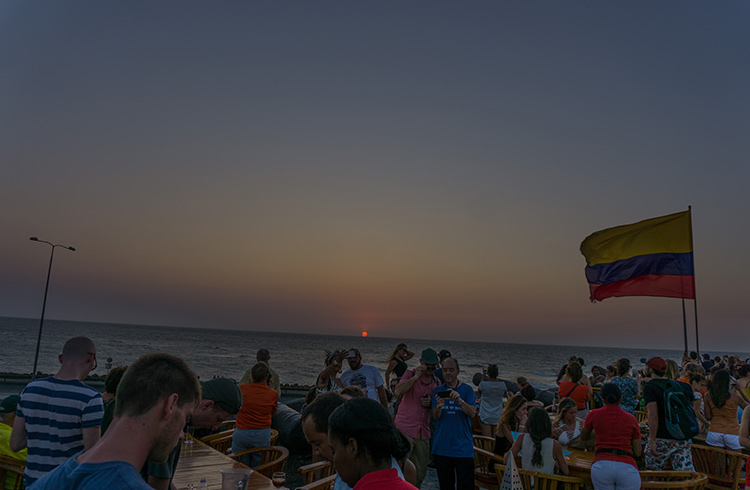
Sunset from Cartagena Old Town.
5. Mosquitoes in Minca are no joke
“Just chuck some repellant on, you’ll be right.”
Oh, how wrong we were. Pro tip coming from someone who’s allergic to mosquitoes: wear long sleeves at night. You might look like a dork and sweat like a vegan in an abattoir, but you’ll be thanking yourself once you wake up from an un-interrupted sleep, where scratching limbs wasn’t a reoccurring issue.
6. Colombia is only dangerous if you go asking for trouble
If you walk the streets of Colombia’s major cities with your mobile phone in your pocket and your bags hanging loosely over your shoulder, you should expect someone will try to grab it off you. If, however, you leave your valuables locked in the safe back at the hostel, and put your phone in a place where people can’t see it, you’ll find unwanted attention shouldn’t be so much of a problem.
If you’re traveling to Colombia for the drugs, raucous nightlife and cheap booze, you might need to keep your wits about you more than elsewhere. It goes without saying: don’t be foolish in South America, especially not in a country that’s known for drugs and violence.
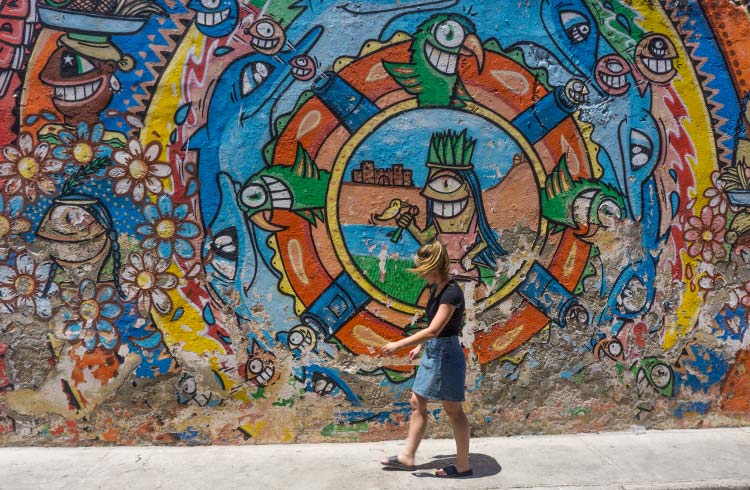
Street art in Cartagena.
7. Tap water on the Caribbean Coast is NOT okay to drink
Wash your toothpaste down the sink with bottled water, don’t stick your mouth under the tap. Save yourself 9,433 trips to the bathroom and steer clear of tap water in Cartagena, Santa Marta – anywhere on Colombia’s Caribbean coast.
Oh, and if the hostel offers a jug of free drinking water, ask them if the water is filtered. The hostel we stayed at in Minca offered us a jug water when we arrived, only later I found out they hadn’t boiled it. Never assume anything.
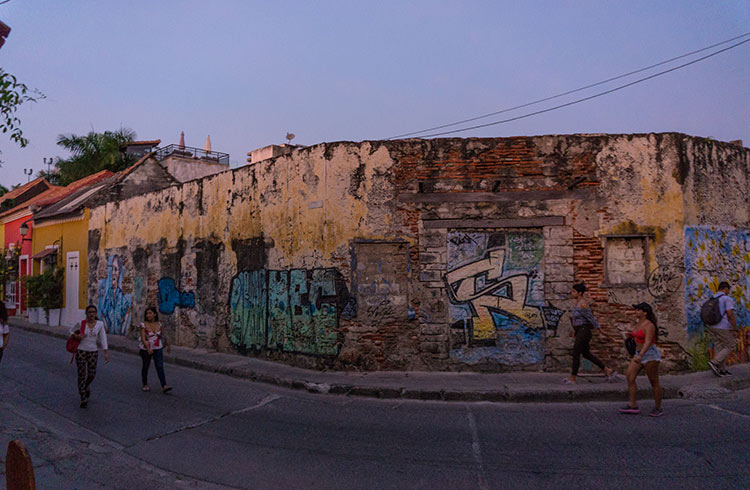
Getsemani neighbourhood, Cartagena.
8. If you don’t stay hydrated, Bogota’s altitude will get you good
This goes for anywhere at high altitude, where above 2,500m+ symptoms could occur to anyone, no matter what your level of fitness or age might be. We’d just finished a 24hr journey across the South Pacific Ocean from Sydney to Bogota, and we were feeling a little dehydrated from all the flying. When we landed it was late at night, so the first thing we did was go to bed.
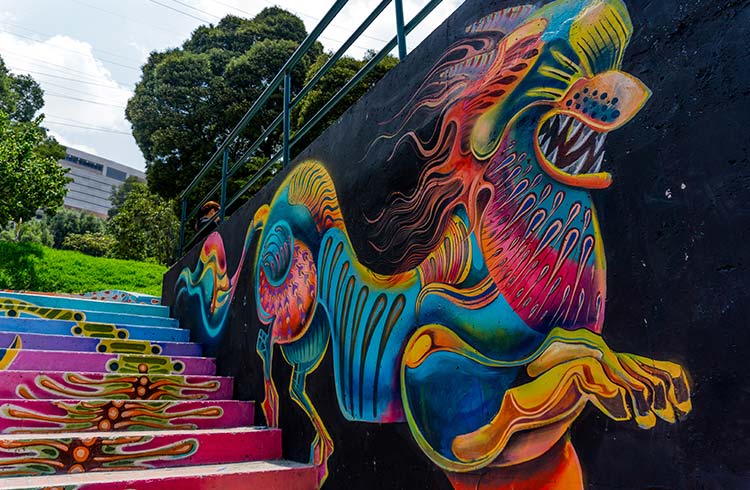
Upon waking up, walking down the flight of stairs for breakfast at our hostel, I was feeling a tad dizzy. Despite spending time above 4,000m earlier the same year in Nepal, where I didn’t once feel the symptoms of altitude sickness, I was certainly feeling it on day one in Colombia’s capital city – 2,644m above sea level.
In Nepal I found the secret to avoiding symptoms is to drink a significant amount of water, and take it slow. We both knew we needed water, but we were cautious of drinking tap water in Bogota, so we were waiting to buy bottles elsewhere.
Later that day, we were walking around Monserrate (3,152m), and we were both feeling a little out of breath. My advice: drink a heap of water on the plane before arriving in Bogota, and go slow. The chance of falling very ill is super slim, but it’s not a nice feeling when you’re tired and dizzy, even after a good nights sleep.
9. A huge sense of achievement will be felt when navigating your way around Colombia
Transport around Colombia isn’t easy, especially if your knowledge of the Spanish language is basic. Elsewhere around the continent travel companies have popped up, helping backpackers get around easily. Peru Hop and Bolivia Hop have made travel around the two countries really simple – and flexible for those who don’t want to get stuck on a tour.
Navigating the local bus system in rural Colombia can be a difficult task. After catching a cheap flight from Bogota to Armenia, we exited the airport to find over-priced taxi drivers offering “economico” rides to town or we had the choice of catching one of the local buses to the bus station. But, which bus? “Blanco bus, si, si! Armenia bus estacion.” We had to trust the man standing beside us, clearly doing his best to make us feel at ease, but also eyeing off our enormous backpacks.
The bus had a turn-stile above the steps. I hoisted my 17kg bag as high as possible, and almost dropped my day bag. Squeezing down the narrow bus aisle, trying my best not to knock any of the passengers out with my bag, I found an empty seat. Now, we were the only gringos on the bus.
We reached the bus terminal, where we used our broken Spanish to book the next bus to the town of Salento. When we hopped on, we were the only passengers. By the time we got to Salento, the bus was packed with locals who were picked up along the way. One guy got on board with his whipper-snipper, ready to cut the grass in Colombia’s coffee zone.
A week later we caught a bus from Cartagena to Santa Marta. The bus was supposed to take us into town, but dropped us a few kilometres outside of town, where we then had to jump on another local bus, which dropped us in the middle of nowhere at 9pm (more on that later).
Moral of the story: Colombia’s public transport system is cheap, confusing but very rewarding when you do finally reach your destination. My advice: keep your bags close.
10. Colombia’s buses and trains are efficient, and cheap as chips
In saying all of this, the transport is cheap. You know what they say: you get what you pay for. Flights between cities are also cheap, so if you get motion sickness and aren’t up for too many overnight bus rides, check flight prices a few days out and you might be pleasantly surprised to find really cheap air fares.
11. Ovens in the bakery are hot (do not lean on them)
This might seem like an obvious one, but while we were in Cartagena we were having a broken Spanish conversation with a local baker, and I leant back on what I thought was a silver shelf, which actually happened to be the oven.
I walked away unscathed, but just a word of warning for any other idiots out there – don’t lean back on anything in a bakery.
You’re welcome.
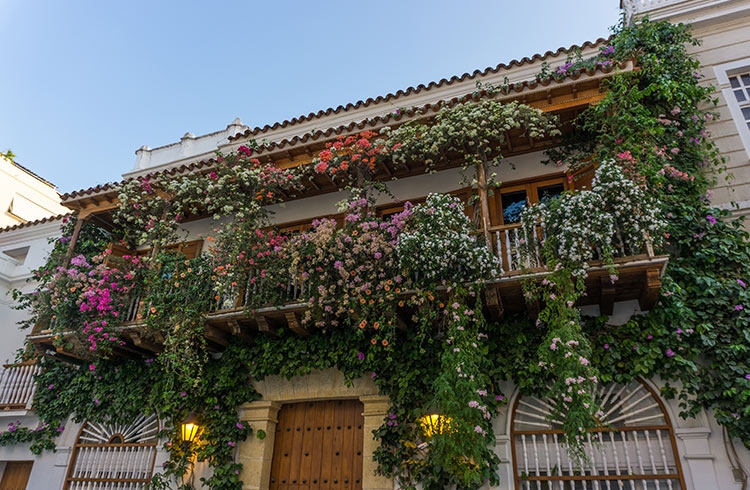
Beautiful home in Cartagena.
12. Taxis have a bad wrap, but most drivers can be trusted
If there’s one piece of advice I was dying to follow, it was this: never hail a taxi from the street in Colombia. Ever.
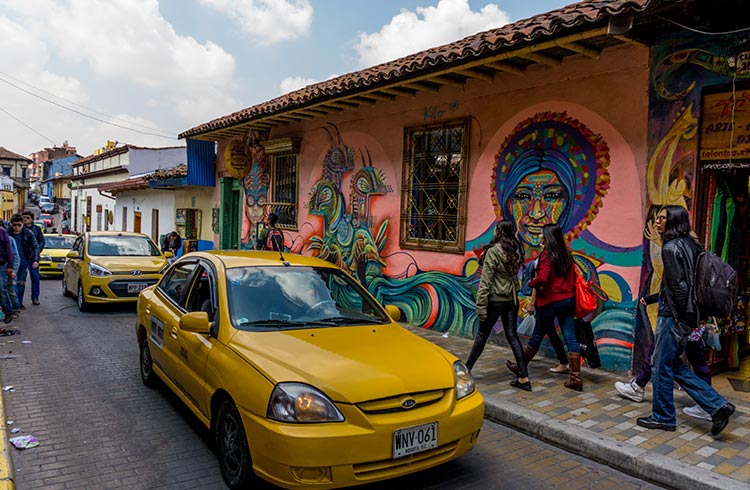
Bright yellow taxis on the streets of La Candalaria, Bogota.
It was 9pm. Our bus dropped us off in the middle of a street in Santa Marta and all we had was an offline map to get us to our hostel.
We had no choice. We saw a taxi coming toward us, and Mark stuck his hand out to wave it down. Music was blaring from the open window as the driver pulled up.
“Tiki Hut, hostel?” we asked.
“Si, vamanos!” and so, we hopped in. I kept my offline map open, and had my eyes on it the whole time to be sure we were going the right way.
On his blinker goes. What’s this, why is he turning into this gas station? Oh god, there’s probably an ATM inside, he’s going to take us for everything we’ve got. Shit. Shit shit shit.
“No estas seguro dentro,” me, not understanding a word he said, could see he was gesturing for Mark and I to get out of the car. What the hell? That’s a lie. It’s not unsafe to be in a vechile while it’s being refuelled.
“Milly, hop out, he’s just filling up the car.” Mark calmly got out of the car, while I sat, mortified in the back holding tight onto my bags. A group of taxi drivers stood a few metres ahead, laughing at the situation. Our driver having a chuckle as he smiled at me, gesturing again for me to exit the vechile.
I reluctantly hopped out, still clutching onto my belongings (like an idiot, might I add). 30 seconds later, the car had a full tank, and our taxi driver hopped back in, waving his arm at us to do the same.
Gee, did I feel stupid when we finally arrived at the front gate of Tiki Hut Santa Marta. Search for accommodation options on HostelWorld.
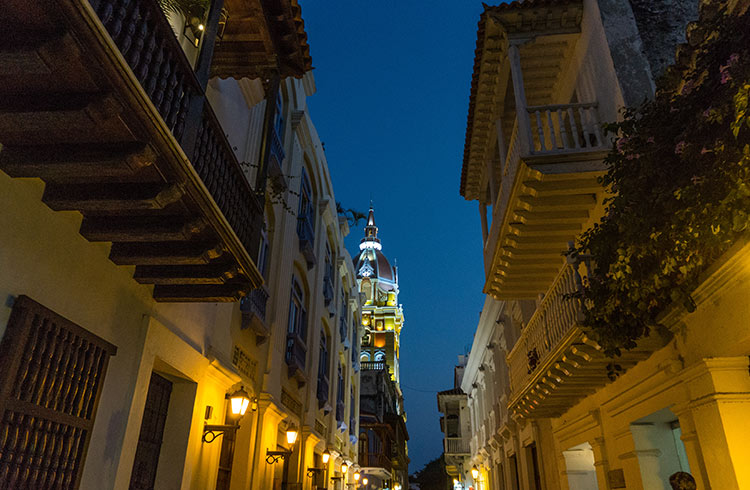
Nighttime on the streets of Cartagena.
Travel to Colombia with an open mind. Be ready for surprises, good food, great hospitality, and incredible landscapes. Also be prepared for the bad stuff, but don’t be like me, don’t be paranoid.
July 19, 2018
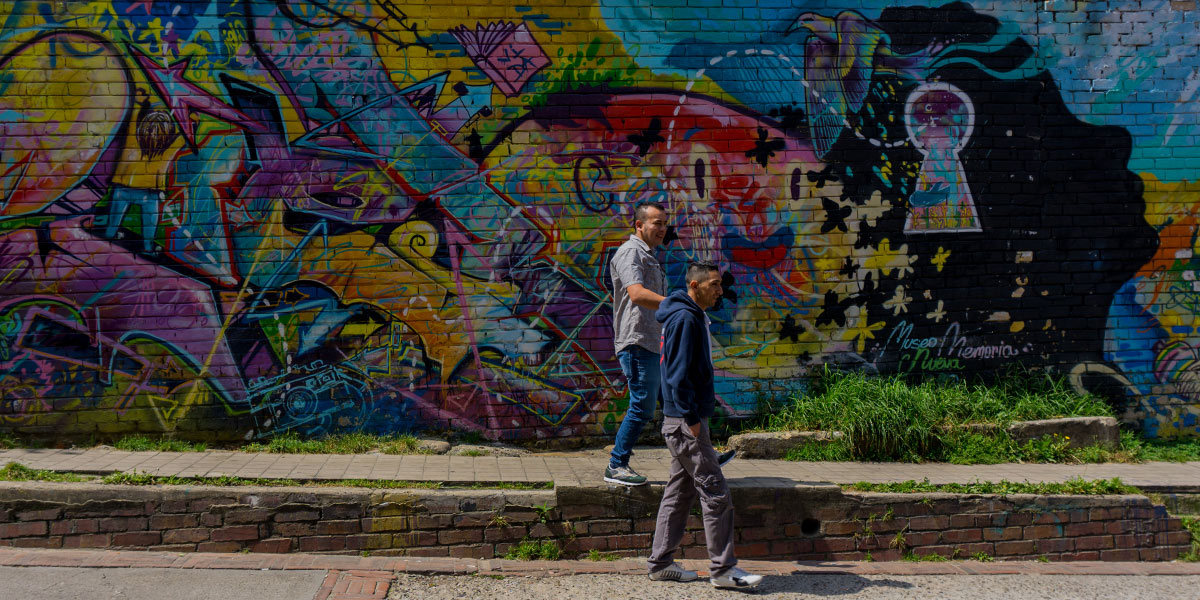
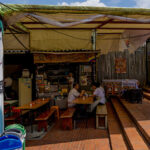
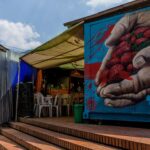
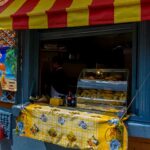

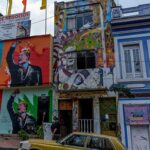

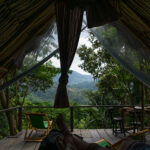
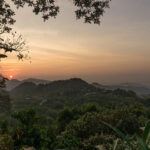

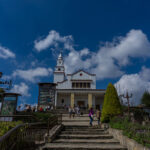
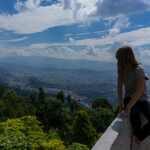
Join the discussion!